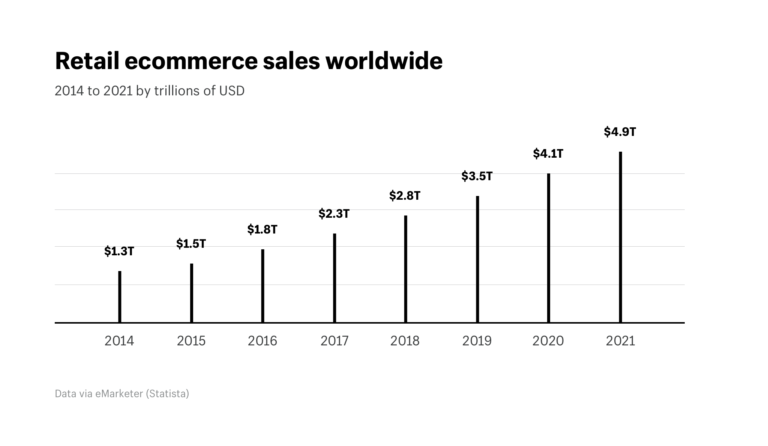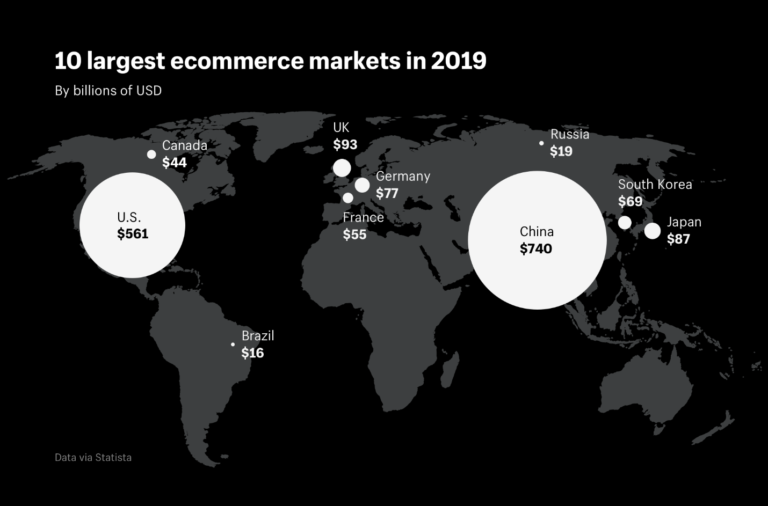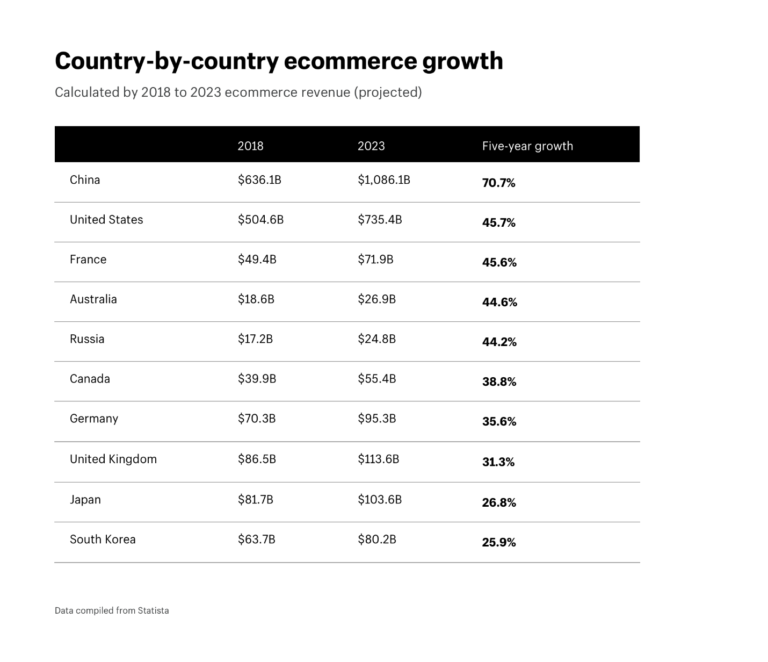Global Ecommerce Statistics for 2020 and Beyond
We define global ecommerce as selling products or services across geopolitical borders from a company’s country of origin – normally defined as its founding or incorporating location. Products or services are sold into non-native markets via online sales and marketing. Cumulative data anticipates a 276.9% increase in worldwide ecommerce sales over the most-recently tracked period.

Numbers of that scale are hard to wrap our heads around. They’re at once invigorating and daunting. If your company is staring down that $4.5 trillion barrel and wondering, “Where do we begin?” rest assured, you’re not alone.
As Harvard Business Review wrote: “Business leaders are scrambling to adjust to a world few imagined possible just a year ago. The myth of a borderless world has come crashing down. Traditional pillars of open markets — the United States and the UK — are wobbling, and China is positioning itself as globalization’s staunchest defender.”
We’ll unpack that quote and more below. For now, the big idea is simple: the shadow of global ecommerce looms too large to ignore.
Ecommerce International Growth
Worldwide numbers aside, ecommerce’s regional markets rank as follows:
- Asia: $831.7 billion
- North America: $552.6 billion
- Europe: $346.5 billion
- Australia: $18.6 billion
- Africa and the Middle East: $18.6 billion
- South America: $17.7 billion
Looking at those same figures along country lines reveals the 10 largest ecommerce markets in the world currently are:

Of course, what truly matters isn’t where we are but where we’re going. Using 2023 projections, a slight reordering appears, as well as one standout leader: China.

Credit: https://mgrblog.com/global-ecommerce-statistics-for-2019-and-beyond/